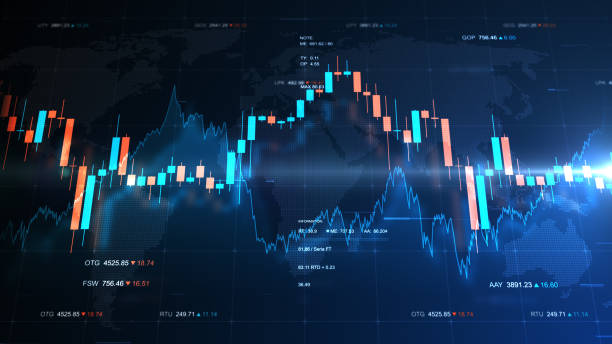Technical Analysis: 10 Key Concepts Every Trader Should Know
Technical analysis is a method used by traders and investors to evaluate and predict the future price movements of financial assets like stocks, forex, commodities, and cryptocurrencies. Unlike fundamental analysis, which focuses on the intrinsic value of an asset, technical analysis relies on past market data, primarily price and volume, to make predictions about future movements. By studying price charts and applying various indicators, traders aim to identify patterns, trends, and signals that can inform their decisions.
In this article, we will delve into 10 key concepts in technical analysis that every trader should understand in order to make informed trading decisions.
1. Price Charts: The Foundation of Technical Analysis
At the core of technical analysis is the price chart. A price chart visually represents the historical prices of an asset over a specific period of time. These charts provide traders with a clear view of price movements, trends, and patterns that can help identify future movements.
Types of Price Charts:
- Line Chart: A line chart is the simplest form of a price chart, plotting the closing prices over a period of time and connecting them with a continuous line. While it is easy to interpret, it lacks the detailed information provided by other chart types.
- Bar Chart: A bar chart displays the open, high, low, and close (OHLC) prices for a specific period. Each bar represents a time period (e.g., a day or an hour) and gives more information than a line chart.
- Candlestick Chart: Candlestick charts are similar to bar charts but present the data in a more visually appealing way. Each candlestick consists of a “body” that shows the opening and closing prices, and “wicks” or “shadows” that show the high and low prices for the period. Candlestick charts are widely used by traders because they provide more information and are easier to interpret.
Key Takeaway: Price charts are essential for understanding market trends and spotting potential entry or exit points. They are the visual representation of market behavior and form the basis of technical analysis.
2. Support and Resistance Levels
Support and resistance are key concepts in technical analysis. These levels are horizontal lines drawn on a price chart that represent price points where an asset has historically had difficulty moving above (resistance) or below (support).
- Support: A support level is a price point where demand is strong enough to prevent the price from falling further. Traders often view support as a potential entry point for buying since the price is less likely to fall below this level.
- Resistance: A resistance level is a price point where selling pressure is strong enough to prevent the price from rising higher. Traders often view resistance as a potential exit point for selling, as the price is less likely to break above this level without strong momentum.
Key Takeaway: Understanding support and resistance levels is critical for identifying potential price reversals or breakouts. Traders can use these levels to plan their entries, exits, and stop-loss orders.
3. Trend Analysis
Trend analysis is the process of identifying the direction of a market’s movement over time. In technical analysis, trends are categorized into three main types:
- Uptrend: An uptrend occurs when the price is consistently moving higher. In an uptrend, each successive high and low is higher than the previous one.
- Downtrend: A downtrend occurs when the price is consistently moving lower. In a downtrend, each successive high and low is lower than the previous one.
- Sideways/Range-bound Trend: A sideways trend, also known as a range-bound market, occurs when the price is moving within a horizontal range without making clear higher highs or lower lows.
Key Takeaway: Recognizing trends is essential for trading success. Traders often follow the principle of “the trend is your friend,” which means trading in the direction of the prevailing trend.
4. Moving Averages
A moving average (MA) is one of the most commonly used indicators in technical analysis. It smooths out price data over a set period, providing traders with a clearer view of the asset’s trend. There are two main types of moving averages:
- Simple Moving Average (SMA): The SMA calculates the average price over a specified period (e.g., 50 days, 200 days) and gives equal weight to all prices in that period.
- Exponential Moving Average (EMA): The EMA gives more weight to recent prices, making it more responsive to price changes compared to the SMA.
Key Takeaway: Moving averages are useful for identifying the direction of the trend. Traders often use moving average crossovers (when a short-term moving average crosses above or below a long-term moving average) as buy or sell signals.
5. Volume Analysis
Volume is the number of shares, contracts, or units of an asset traded over a specific period. Volume analysis is crucial because it helps traders assess the strength or weakness of a price movement. High volume often confirms the validity of a price move, while low volume may suggest a lack of conviction or potential reversal.
- Increasing Volume: Increasing volume during an uptrend or downtrend indicates strong momentum in the direction of the trend.
- Decreasing Volume: Decreasing volume may signal a weakening trend or a potential reversal.
- Volume Spikes: Sudden spikes in volume often occur during significant price moves, indicating strong interest or news events.
Key Takeaway: Volume analysis can help validate price movements and enhance the reliability of technical signals. A price move accompanied by high volume is generally more trustworthy than one with low volume.
6. Relative Strength Index (RSI)
The Relative Strength Index (RSI) is a momentum oscillator that measures the speed and change of price movements. The RSI ranges from 0 to 100 and is typically used to identify overbought and oversold conditions:
- Overbought: When the RSI is above 70, it suggests that the asset may be overbought, and a price reversal or pullback may occur.
- Oversold: When the RSI is below 30, it suggests that the asset may be oversold, and a potential buying opportunity may arise.
Key Takeaway: RSI is a valuable tool for spotting potential market reversals. It helps traders identify when an asset is overextended and due for a correction.
7. Moving Average Convergence Divergence (MACD)
The Moving Average Convergence Divergence (MACD) is a trend-following momentum indicator that shows the relationship between two moving averages of an asset’s price. It is calculated by subtracting the 26-period EMA from the 12-period EMA. The result is the MACD line, which is plotted against a signal line (the 9-period EMA of the MACD line).
- Bullish Signal: When the MACD line crosses above the signal line, it is considered a bullish signal, indicating potential upward momentum.
- Bearish Signal: When the MACD line crosses below the signal line, it is considered a bearish signal, indicating potential downward momentum.
Key Takeaway: MACD is an effective tool for identifying trend reversals and momentum shifts. It is often used in combination with other indicators to confirm trade signals.
8. Candlestick Patterns
Candlestick patterns are formations created by the open, high, low, and close prices of an asset over a specific period. These patterns are used to predict future price movements based on historical data. Some of the most popular candlestick patterns include:
- Doji: A Doji occurs when the opening and closing prices are nearly the same, signaling indecision in the market and a potential reversal.
- Hammer: A Hammer is a bullish reversal pattern that forms after a downtrend, with a small body at the top and a long lower wick.
- Engulfing: An Engulfing pattern occurs when a large candle fully engulfs the previous smaller candle, indicating a potential trend reversal.
Key Takeaway: Candlestick patterns provide valuable insights into market sentiment and potential reversals. Traders often use them in conjunction with other technical analysis tools.
9. Chart Patterns
Chart patterns are formations created by the price movements on a chart. These patterns help traders identify potential trend reversals or continuations. Some common chart patterns include:
- Head and Shoulders: A reversal pattern that signals a change in trend direction. The pattern consists of three peaks: a higher peak (head) between two lower peaks (shoulders).
- Triangles: Triangles are consolidation patterns that can either be bullish (ascending triangle) or bearish (descending triangle). The price breaks out of the triangle in the direction of the prevailing trend.
- Double Top and Double Bottom: These are reversal patterns where the price fails to break above (double top) or below (double bottom) a key level, signaling a potential trend reversal.
Key Takeaway: Chart patterns are powerful tools for predicting future price movements. Traders can use these patterns to plan their entries and exits with more precision.
10. Risk Management and Stop-Loss Orders
No technical analysis strategy is complete without a strong risk management plan. A stop-loss order is an essential tool used to limit potential losses on a trade. By setting a stop-loss at a predetermined level, traders can control their risk exposure and protect their capital.
- Trailing Stop: A trailing stop is a type of stop-loss order that moves with the market price. It allows traders to lock in profits as the price moves in their favor while protecting against a reversal.
Key Takeaway: Proper risk management is essential for long-term success in trading. Stop-loss orders help protect traders from significant losses, while trailing stops allow them to capture profits in trending markets.
Conclusion
Technical analysis is an invaluable tool for traders, offering a systematic approach to understanding market behavior and predicting future price movements. By mastering the 10 key concepts outlined above—price charts, support and resistance, trend analysis, moving averages, volume, RSI, MACD, candlestick patterns, chart patterns, and risk management—traders can enhance their decision-making process and improve their chances of success in the markets.
While technical analysis can be highly effective, it is important to remember that no method is foolproof. The markets are influenced by a wide range of factors, and technical analysis should be used in conjunction with sound risk management practices and a solid trading plan.






